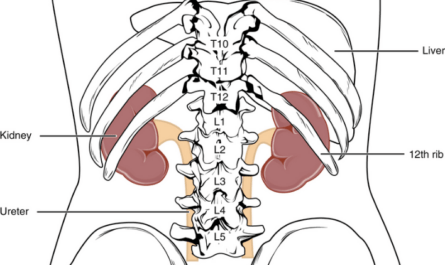Sciatica, hip, and back pain can be debilitating. It makes even the simplest daily tasks feel like a monumental challenge. The good news is that with the right stretches, you can find relief and prevent future flare-ups. In this article, we’ll explore 10 powerful stretches that can help alleviate your discomfort and get you back on track to living a pain-free life.
The Importance of Stretching
Stretching is an essential part of any fitness routine or physical activity. It involves gently lengthening and elongating the muscles and tendons to increase flexibility, improve range of motion, and prevent injuries. Here are some reasons why stretching is important:
1. Injury prevention: Stretching helps to warm up the muscles and increase blood flow to the tissues, making them more pliable and less prone to injury. It also improves joint health and reduces the risk of strains, sprains, and muscle tears.
2. Improved flexibility: Regular stretching helps to improve flexibility by increasing the elasticity and length of muscles and tendons. This allows for a greater range of motion in joints, making everyday activities easier and reducing the risk of muscle imbalances.
3. Enhanced performance: Stretching before physical activity can enhance performance by improving muscle coordination, balance, and efficiency of movement. It also increases muscle power and strength, allowing for better athletic performance.
4. Reduced muscle soreness: After an intense workout or physical activity, stretching can help to reduce muscle soreness and stiffness. It promotes the removal of waste products, such as lactic acid, from the muscles, which can contribute to post-exercise muscle soreness.
5. Stress relief: Stretching not only benefits the body but also the mind. It can help to relieve stress, tension, and anxiety by promoting relaxation and improving blood flow to the brain. It also increases the production of endorphins, which are natural mood-boosting chemicals.
6. Better posture: Stretching can help to correct posture imbalances by lengthening tight muscles and strengthening weak ones. By improving overall posture, it reduces the risk of developing musculoskeletal problems, such as back pain, neck pain, and postural abnormalities.
7. Increased circulation: Stretching increases blood flow to the muscles, which enhances circulation and oxygen delivery. This improves the overall health of the cardiovascular system and aids in the removal of waste products from the body.
8. Mental clarity and focus: By incorporating stretching into your daily routine, you can experience mental clarity and improved focus. It allows you to take a break from your daily activities, increase body awareness, and connect with your breath.

10 Stretches Help Relieve Sciatica, Hip, and Back Pain
Standing Piriformis Stretch
Standing Piriformis Stretch is a useful exercise to get rid of the pain brought about by sciatica.
- Place the affected leg (the one in pain) over the other leg.
- Slowly lower your hips toward the ground. Make sure that you will maintain a 45-degree angle.
- Bend your standing knee as you see fit.
- Lean forward using your torso while you extend your arms. Make sure that your arms are parallel to the ground. Your spine should be kept straight throughout the process.
- Hold for about a minute.
- Switch the legs.
To make this exercise easier, you may stand up against the wall to keep your balance. You can use the wall as your support to make the stretch easier.
Groin Stretch
This is one of the exercises you can do if you usually feel pain in your leg. It would help if you also had a series of other leg exercises to make it effective.
- Sit on the floor and stretch your legs. You can try it as far as you can.
- Tilt your torso toward the direction of the ground. Your hands should be placed on the floor while doing this stretch.
- Slowly try to place your elbows on the ground. You can try to reach as many as you can. You can try placing your elbows on the ground, but do not push yourself to do s if you cannot do it.
- If you feel any pain, make some adjustments to the stretch that you are making.
- Hold for about 10 – 20 seconds, depending on whether you are feeling pain.
Some people do other leg exercises BEFORE doing this particular exercise. Get to know the different activities you can do to be sure.
Side-Lying Clam Exercise
You would like to do a stretching exercise that can effectively eliminate the pain in your hip. This can be good for your needs.
- Depending on the area that hurts, you must lie on one side. The affected area should not be on the floor.
- Make sure that your legs are placed backward. One foot should be placed over the other so the legs can parallel each other.
- Your spine should still be kept straight and should not bend, or you may end up hurting yourself.
- The hip that is affected should be placed over the other so it can be guided appropriately.
- Raise the knee upwards.
- Make sure the rest of your body is still in its original position.
- Return the knee to the original position.
- You can do this exercise 15 times.
Always keep track of the pain that you are feeling. When you are feeling pain, this means that you are pushing yourself too hard.
Supine Piriformis Side Stretch
It would help if you stretched the sides of your body so that the pressure will not be too bad on your hips and your back. This side stretch may be one of the exercises you have to do.
- You can lie on the mat you have set up on the floor. This will keep you from slipping while stretching.
- Make sure your back is straight on the ground and your legs flat.
- The affected leg should be bent upward and placed on the external portion of your other leg.
- Try to pull on the knee while it is bent across your body. You will begin to feel a stretch. The moment that it is painful stops.
- Keep your shoulders and your hips on the ground while you are doing the stretching.
- You need to keep this position for about 30 seconds. It would help if you repeated this exercise three times to get the desired results.
Sit-Down Stretch
You would like to eliminate the pain brought about by your sciatica condition. If you answer yes, then this is one of the exercises that you should try.
- You can sit on a chair and make sure that you are comfortable.
- Cross the affected leg over your other leg.
- Move your chest slightly forward but ensure that your spine remains straight.
- Hold this position during deep breathing. Make sure that you are not in any pain.
- You can hold the position for about half a minute.
- Repeat the same process with your other leg.
Supine Piriformis Stretch
This stretching exercise should be a part of the exercises you are going to do.
- Lie down, and once you are comfortable, you can raise your knees and bend them upward.
- The affected leg should be placed on the other leg.
- You can bend it, so it is almost on your chest area.
- Hold on to your knee with the opposite hand and try to pull it towards your shoulder area. You will start to feel a stretch.
- Hold that position for half a minute before releasing.
If you do not feel a stretch when pulling your ankle towards your shoulders, you may try to stretch it further. The moment that you feel a pinch on the front portion of your thigh, you should stop.
Outer Hip Piriformis Stretch
Some people feel this stretch is a bit ambitious because it is not easy. You can do this if you have been doing other stretches for quite some time.
- Lie down on your back and bend your knee towards the back of your other knee.
- Your foot should be behind your other knee, and your knee should be touching the ground.
- The hand should be placed on the side where you have placed your knee. It would depend on whether your affected knee is your left or right.
- Raise your other arm while keeping the hand on the knee.
- The raised arm should be placed slowly toward the opposite direction of the knee.
- Keep that position for about 20 seconds.
- Switch and do the same process for your other knee.
- Go back to your original position and stretch both legs. You must also place your bended knees over your chest using your hands.
Remember that you should only do a stretch that is comfortable for you. Pushing yourself too much will not achieve anything but pain.
Inner Thigh Stretch
This is an easy stretch that you can do with the other exercises that are listed here.
- Sit down on the ground. You can have a mat underneath if you want to feel more comfortable.
- Place your feet’ soles in front of your pelvis area.
- Hold your left ankle with your right hand and your right ankle with your left hand.
- Push downward with your knees as if you would like to touch the ground while sitting down.
- If you start to feel pain, back up a bit.
- Hold the position for about half a minute.
- You may need to flutter your legs, too, for 30 seconds.
You can ask your physical therapist how to do a deeper stretch if this stretch is not working for you anymore.
Hip Extension Stretch
This stretching exercise will require you to use your exercise mat. If you do not have one, it is best to invest in this now.
- It would help if you faced the ground on all fours.
- Make sure that your hands are in line with your shoulders.
- Your weight should be a bit off your affected leg. Raise your leg upwards, ensuring that your knees are bent with the toes facing the ceiling.
- You can lower your leg slowly as if returning to the first position.
- Do this stretch 15 times.
You need to ensure that you will not feel any pain while doing this exercise, so you will be on your way to improving your condition.
Buttocks Stretch
This stretching exercise can improve your piriformis muscle so that it will be stronger. You can also lessen the back pain you are feeling.
- Your hands and your knees should be placed on the ground.
- You need to place the affected leg underneath your trunk. It should be placed on the opposite side while the knee is put towards the shoulder area.
- Slowly lower your head until your forehead touches the ground.
- You may need to support yourself using your arms and forearms.
- The other leg should be stretched out behind you while doing this stretching exercise.
- Hold the position for about 30 seconds before reverting to your usual position.
- Do this about three times.
These exercises can help you heal from sciatica at the soonest possible time. Follow the tips and advice of medical professionals to be sure of what you will get.
How to Incorporate Stretches into Your Routine?
To experience the full benefits of these stretches, it’s essential to incorporate them into your daily routine. Here are some tips:
- Start slowly: If you’re new to stretching, begin with just a few stretches and gradually increase the duration and intensity as your body adapts.
- Listen to your body: Never push through pain or discomfort. If a stretch feels too intense, back off or modify it to suit your needs.
- Breathe deeply: Proper breathing can help you relax into the stretches and maximize their effectiveness.
- Stay consistent: Aim to stretch daily or at least a few times a week for best results.
- Combine with other therapies: While stretching can provide significant relief, it’s often most effective when combined with other therapies, such as massage, chiropractic care, or physical therapy.
- Warm up first: Before stretching, it’s essential to warm up your muscles with light cardio or gentle movements to prepare your body and reduce the risk of injury.
Remember, while stretching can provide significant relief, it’s always a good idea to consult with a healthcare professional. This is important especially if your pain is severe or persistent. They can help identify the root cause of your discomfort and provide personalized guidance on the best stretches.






